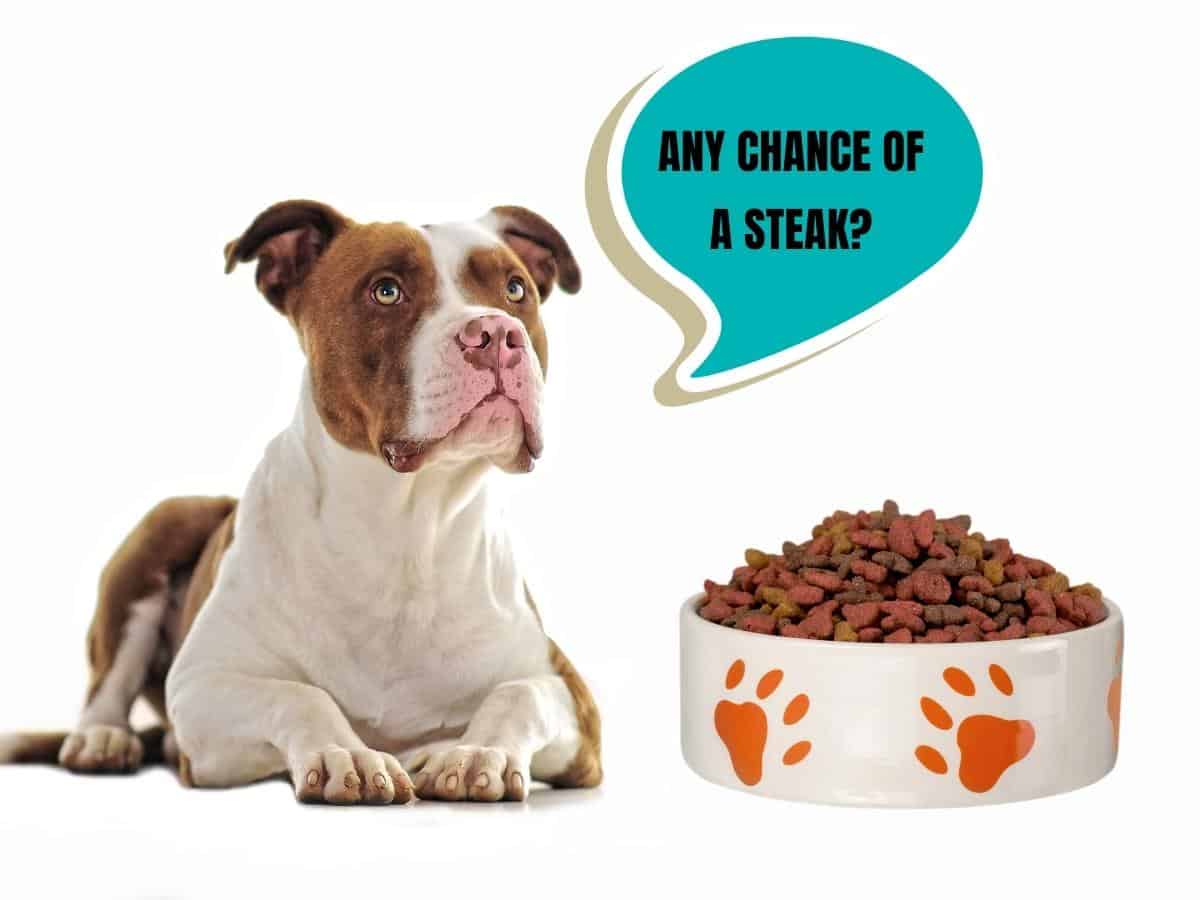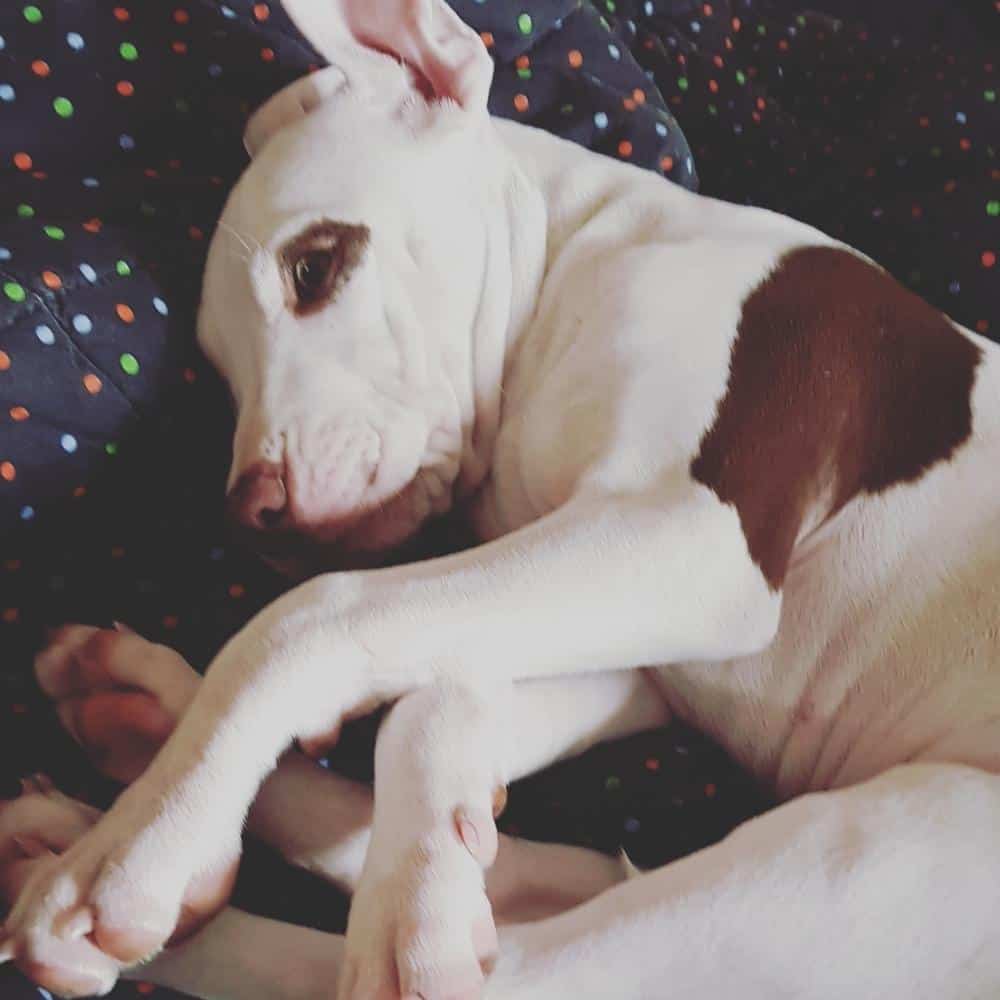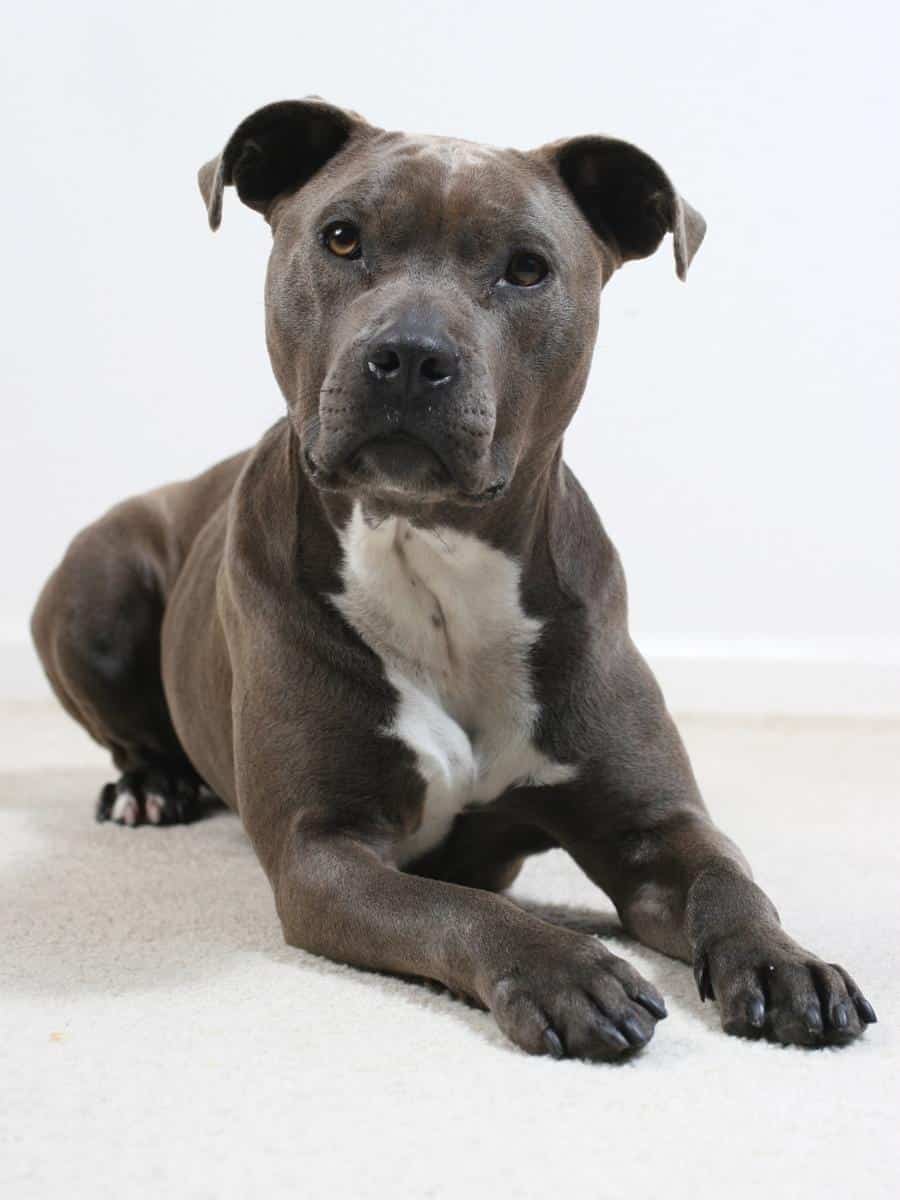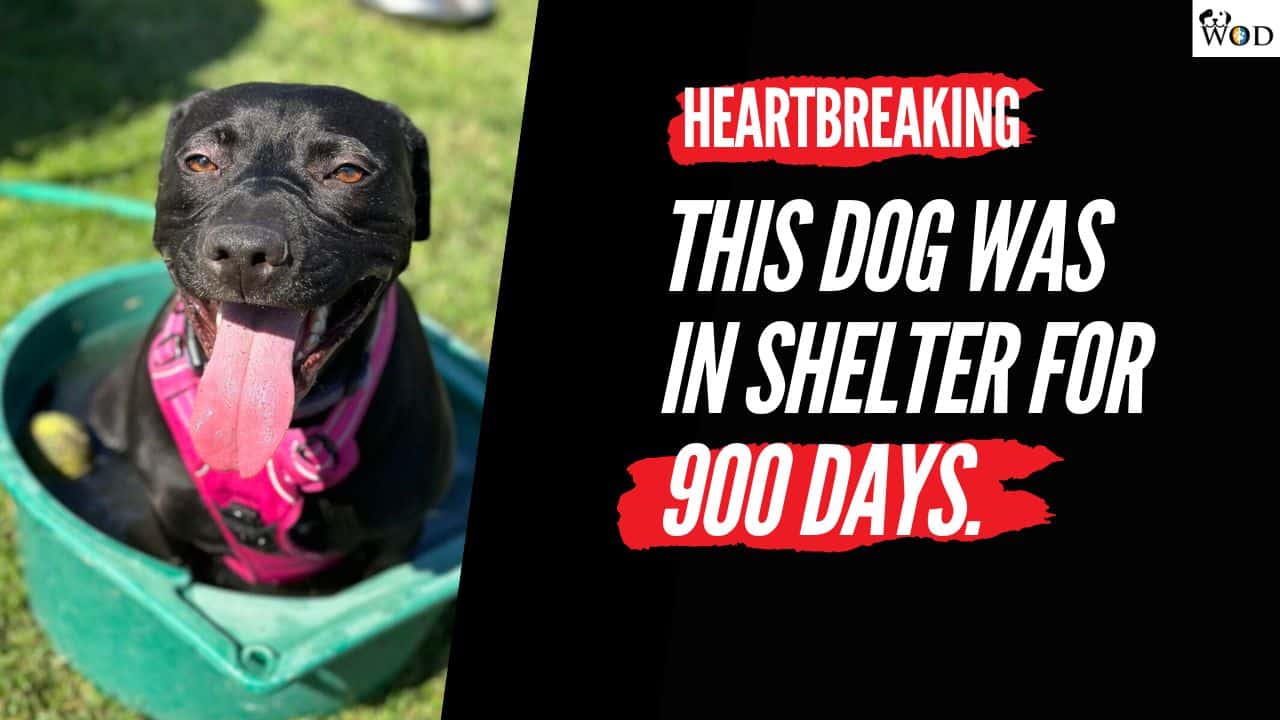You adore your Pitbull and enjoy watching him happily eating his food. Pitbulls are known for loving their food and are pretty food-motivated, but what do you do when your Pittie turns his nose up at his favorite meal?
If your Pitbull won’t eat, you must figure out why, when you should worry, and how to treat dog inappetence.
If your Pitbull won’t eat, he may be sick, nervous, stressed, or have dental discomfort or pain. He may also be bored with his current food, have a sensitive stomach, a reaction to a medication, or be an elderly dog with a reduced appetite.
In this guide, we’re going to explore the myriad of reasons that could be behind your Pitbull’s lack of interest in food.
From health issues to dietary preferences and even emotional factors, we’ll cover all the bases to help you understand what’s going on with your furry friend and, more importantly, how to get his appetite back again.
Let’s get started!

Why Won’t My Pitbull Eat?
Typically, your Pitbull won’t just stop eating for no reason. As a responsible pet owner, you must find out why your Pitbull no longer wants to eat (or doesn’t eat as much) and make the changes necessary to stop this new behavior.
Here are 10 reasons why your Pitbull may not be eating:
- He has a slower metabolism due to adulthood.
- Your Pitbull is now a senior dog.
- He is stressed or anxious or has separation anxiety.
- Your Pitbull has a bacterial or viral infection
- He is in a lethargy starvation loop.
- Your Pitbull has a poor-quality diet.
- He has a sensitive stomach.
- Your Pittie has dental pain.
- He has motion sickness.
- Your Pitbull has reacted to medication.
Before you assume he is just not as hungry or dislikes his current food, you must consider all the possible reasons your Pitbull won’t eat.
1. Slower Metabolism Due To Adulthood
If your Pitbull previously ate 2 to 3 meals a day but seems only hungry enough for one, you don’t need to worry.
You may have taken the previous meal frequency as the norm, but adult Pitbulls often eat less than their younger counterparts despite having larger mass (which should require higher calories).
However, as your Pitbull becomes an adult, his metabolism slows down to adjust and conserve calories. If anything, you should be glad that his appetite matches his metabolism, especially as Pitbulls can be eating machines!
Considering how much you love your Pittie, you may want to feed him frequently, but doing so might make him overweight.
Considering a dog’s nutritional needs, as researched by the National Academy of Sciences, a 50lb adult Pitbull’s calorie requirement is 1,353 for a very active dog and 989 calories for an inactive dog.
A younger active Pittie of the same weight requires 1,451 calories per day.
2. Your Pitbull is Now a Senior Dog
Senior Pitbulls need fewer calories as their metabolism slows with age, so they need less food. Aging dogs also exercise less, so they’ll expend fewer calories.
Considering a Pitbull’s lifespan of 12-14 years, the 8th or 9th year is when they become a senior. It shouldn’t be surprising if your adult Pitbull starts eating less by his eighth year.
Remember, you can get higher-calorie food to offset any calorie loss from your Pitties’ reduced food intake. But generally, it isn’t even a factor you should offset as your dog’s body adjusts to the new intake.
On the contrary, older Pitbulls require fewer calories due to reduced metabolism and level of activity. Plus, older dogs sleep more.
That said, keep an eye out for rapid weight loss. If your Pitbull is losing weight, his lower appetite isn’t a result of old age or slowing metabolism. Since you’re with your dog daily, the gradual weight loss might not be apparent.
So, either weigh your Pitbull at home or have him weighed regularly at your veterinary practice.
3. Your Pitbull is Nervous or Stressed / Separation Anxiety
Have you ever been so nervous you forgot you were hungry? A similar thing can happen to your Pitbull, except on a different scale.
Since we need a lot more food and can deal with our anxiety better, we manage to get a meal at the end of the day, even if we have a stressful day at work.
But your dog doesn’t have to go to the office or have an upcoming date to get nervous! Nonetheless, here are a few things that can make your Pitbull stressed.
- Change of environment – If you have moved house, have changed your shifts at work, or have a new partner or a child who has flown the nest, your Pittie might be stressed. Dogs are creatures of habit and thrive off routine, so they become unsettled and nervous if changes are made.
- Loud noises – Any changes in your Pitbull’s environment that bear loud noises will make him nervous. Is there ongoing building work nearby, or are fireworks and thunder the usual culprits? My dog gets particularly anxious when a loud motorcycle races past.
- New pet or people – Have you brought home a new pet? Is someone new staying over at your place? Some dogs aren’t great at new introductions and can get nervous.
- Separation anxiety – If you have started leaving your Pittie alone for long periods, he might be nervous about this change. Not all breeds have the same tendency to suffer from separation anxiety, but no canine is entirely immune to being a little nervous when their best friend is gone.
To manage your Pitbull’s nervousness due to environmental changes, you need to increase your availability and proximity to him.
You need to be around your dog to comfort him, whether he’s stressed about a location change or a new cause of noise outdoors.
You’ll find that sometimes, it might take extended periods of being around your Pittie before he is receptive to eating. Ensure you know how to communicate with him and understand his body language.
You can consider hiring a dog sitter to calm your Pitbull if he is prone to separation anxiety – ensure you feed him before leaving him alone.
If Your Dog Won’t Eat Unless You’re With Him, Watch This Video…
If your Pitbull has developed a severe case of separation anxiety, you may need to work on training strategies such as counter-conditioning and desensitization.
4. Your Pitbull Has a Bacterial or Viral Infection
If your Pitbull is healthy, with the only difference in behavior being lower food intake, you have nothing to worry about.
However, if he eats so little that he’s practically fasting, you might have a genuine cause for concern.
This is further aided by symptoms like vomiting or diarrhea, which the National Animal Supplement Council asserts are indicators of a bacterial infection.
Do not try home remedies to fix this. If your Pitbull is vomiting or has persistent loose stools, visit your vet and get him checked out.
If your Pittie is a social butterfly and loves to play with other dogs, he may have encountered the downside of being a social superstar. Simply being near another infected dog is all it takes to catch a virus.
Heavy breathing (compared to baseline), coughing, diarrhea, and vomiting are signs of viral infection in Pitbulls.
Some of these symptoms overlap with bacterial infection, and not eating (alongside vomiting and loose stools) is one of the symptoms.
In other words, it doesn’t matter whether bacteria or a virus causes the illness; you must take your Pittie to the vet as soon as possible and keep him away from other dogs.

5. Your Pitbull is in a Lethargy Starvation Loop
Sickness can lead to lethargy, and many factors can lead to starvation. It doesn’t matter what comes first because one can lead to the other, leading to the first. This cycle keeps going round and round in a vicious circle.
Dog owners will sometimes inadvertently kick off a lethargy starvation loop when forcing their dogs to eat right. By holding off food so the dog is “truly hungry” and receptive to the food he doesn’t like, you may make him lazy.
The loss of energy and general lethargy leads to metabolic adjustment. With fewer calories being used, your Pittie feels less hungry, which leads to even lower energy usage.
Giving your Pitbull a calorie-dense healthy treat can be a great way to break off this loop from the calorie consumption end. You can also combat your dog’s lethargy by simply getting him excited with fun activities and your energetic presence.
Your dog can return to health with better care, but sometimes, when trying to get your pup healthy, you might reduce his appetite.
6. Poor Quality Diet or Inappropriate Feeding Style
If you are feeding your Pitbull low-quality dog food, it may cause his inappetence. Not only does cheap, poor-quality food taste different, but it also lacks essential nutrients.
Pitbulls need a high-quality, protein-rich diet. They need at least 22% protein during puppy growth stages and 18% protein as adults. Pitbull puppies need 8% fat, and adults require 5% fat to meet their energy needs.
Carbohydrates, vitamins, minerals, and water are also necessary for good health.
There are many types of food you can feed dogs to fit the above nutritional criteria, such as dry, wet, raw, freeze-dried, home-produced, etc. However, the best diet for Pitbulls is dry food.
Although defined as a medium-sized breed, Pitbulls vary in size. However, they are stocky, muscular, and strong, with a broad head, a strong neck, powerful jaws, and a broad chest.
The average adult male Pittie weighs 35 to 65 pounds, while females can weigh 30 to 60 pounds.
Dry food for Pitbulls is more practical. It is also the least expensive, even if you choose a top-quality brand.
You can read more about what to feed your Pitbull in my definitive guide, Best Diet For Pitbulls: Nutrition, What To Feed, & More!
Also, you may have inadvertently turned your Pitbull into a picky eater by giving him too many treats or table scraps.
He will naturally turn his nose up at his kibble if he knows he’ll get something far tastier from your plate! Try limiting treats to training times only.
Learn More on Why Your Dog Won’t Eat His Food…
7. Your Pitbull Has a Sensitive Stomach
Although Pitbulls are not generally known for having a sensitive stomach, some Pitbulls have a delicate digestive system.
A sudden change in diet can easily upset your dog’s stomach, so if you change the brand or type of diet, transition very gently.
Pitbulls are also genetically predisposed to allergies. However, a common misconception is that a reaction to food causes Pitbull skin allergy.
However, food allergies in dogs are rare (less than 10%), and the allergy is more likely to be caused by environmental factors such as pollen or fleas.
Don’t worry, though, as there are treatments – as seen in this study of a Pitbull successfully treated with fleas and worms concurrently.
Unfortunately, the dog food industry is partly to blame for this myth due to their misleading marketing of grain-free food as a solution to food allergies when a protein source is generally the culprit.
8. Your Pitbull Has Dental Pain
Whether your dog bit something hard and cracked a tooth or has an infection, his mouth could be aching or extremely painful. Such aches lead to a refusal to eat even though your Pitbull is hungry.
To test if your best friend has an appetite, look for saliva/drooling when bringing him food. It might not be about his appetite if he still refuses to eat despite drooling.
Ensure you get veterinarian help and, in the meantime, help soothe the pain in his mouth by trying a liquid diet.
Switching temporarily to wet food might work as well. Or you could try semi-moist dog food, which comprises 60-65% water and might be easier for your Pitbull to consume.
Keeping your Pitbull away from bones might seem cruel, but considering the risk of a brittle bone breaking is not an option.
It might be hard not to throw him a bone if that’s all he will put in his mouth, but if the problem arises from dental disease, giving him a bone that risks his teeth isn’t the wisest choice.
9. Your Pitbull Has Motion Sickness
If your Pittie has accompanied you on a trip and continues to avoid food despite returning home, it may not be about the location; it’s about traveling itself. Dogs love a good trip and aren’t usually afraid to venture out.
However, some experiences, such as car journeys, can leave them with motion sickness, directly contributing to a loss of appetite. However, this doesn’t last long enough to make your Pitbull starve, as he should start feeling okay after a few hours.
If travel sickness becomes an issue, you can prevent it with anti-motion sickness medication. Ensure to withhold food for half a day before traveling (ironically) so your Pitbull doesn’t vomit.
You can also take additional measures like keeping the car cool and using a portable soft travel crate to make your Pitbull feel safe, secure, and more comfortable.
10. Recent Vaccination or Other Medication
Vaccinations mimic symptoms of a virus without the risk of replication, giving one’s immune system a way of fighting the virus and getting better at eliminating it.
Earlier in this post, we discussed how getting a viral infection can cause a loss of appetite in your Pitbull.
Putting two and two together would conclude that a recent vaccination can cause temporary loss of appetite (among other symptoms). However, this should only last a day or two.
Some medications can also cause your Pitbull to be off his food. Side effects are usually nausea and loss of appetite. If symptoms persist, check with your vet, as there may be an alternative.

How To Get Your Pitbull Eating Again
Here are my top tips to get your Pitbull eating following a loss of appetite:
- Choose a more fragrant food. Better quality foods will have a meatier aroma.
- Add unsalted beef or chicken broth or even warm water to dry kibble. This can be an alternative to adding wet food and changes the texture, smell, and taste of the food, making it more enticing.
- Add a tasty topping. Adding other toppings, such as plain yogurt, chicken, salmon, or tuna, offers variety and is my approach with my dog.
- Ensure your Pitbull’s bowl is clean. This might seem obvious, but bowls tend to get tiny scratches and nicks in which germs can accumulate. Stainless steel and ceramic bowls are preferred as they are easy to clean and non-porous.
- Feed twice a day. This keeps your Pitbull’s energy levels up, stabilizes blood sugar, and prevents overfeeding and bloat (GDV), a severe condition.
- Exercise your Pitbull to build up an appetite. But don’t feed your dog an hour before or after exercise – again, to prevent bloating.
- Maintain a regular feeding schedule. Dogs are creatures of habit and thrive on routine. Stick to a routine as best you can.
- Remove your dog’s bowl if he refuses his meal. If your dog won’t eat, remove his bowl and try again after 30 minutes. When my pup refuses food, this technique usually works for me.
- Try hand feeding for a while. But don’t make this routine, as your best friend will learn to expect it!
- Ensure your dog always has access to clean water. If your Pittie finds it hard to keep hydrated, try a dog water fountain, as they will tempt him to drink and keep his water clean and fresh.
- Change your dog’s feeding bowl. Some dogs don’t like to see their reflection in a stainless steel or glass bowl, so try a ceramic one instead.
- Keep mealtimes separate from yours. This also removes the temptation to feed your pup your leftovers!
- Make mealtimes fun. If you have a ‘picky eater,’ consider an interactive dog feeder that challenges and occupies your dog during mealtimes.
- Change the location of your Pitbull’s bowl. Moving your dog’s feeding bowl to a different location or room may bring back his appetite. For example, if your dog has separation anxiety, he may associate a negative experience (being left alone) if he is always left in the same room where his bowl is kept.
How Long Can a Pitbull Go Without Eating?
If your Pitbull loses his appetite due to a recent vaccination, medication, a dental procedure, or motion sickness, you know that he will soon start eating his food again.
If something else is wrong, you must know how long he can go without eating before it becomes a health risk.
A Pitbull can safely go without eating for up to 3 days. However, dogs can survive up to 5 days if they consume plenty of water.
However, you should visit your vet if your Pittie has refused to eat for more than 48 hours or sooner if he has persistent diarrhea, as he can quickly become dehydrated.
Still, you need to make sure you:
- Figure out the cause of the loss of appetite.
- Adjust his diet to match his eating habits or fix the habits by changing his feeding style as suggested above.
- Failing the above does not work; consult your veterinarian or a pet nutritionist.
FAQs
How do I get my picky Pitbull to eat when it’s hot outside?
When temperatures rise, some dogs lose interest in eating. To encourage your Pitbull, serve meals at cooler times, like early morning or evening. Add ice cubes to water or try canned food that has more moisture.
Offer smaller, more frequent portions to avoid an upset stomach. Consider using a cooling mat under their food bowl.
Is it normal for Pitbull puppies to go off their food sometimes?
A puppy’s appetite can fluctuate from day to day. Occasional periods where they eat less are generally normal for growing puppies as long as they remain playful and continue to gain weight.
However, if your Pitbull puppy seems lethargic or is losing weight, it’s best to consult your vet to rule out any issues.
What are some signs my Pitbull may have dental issues causing loss of appetite?
Bad breath, drooling, pawing at the mouth, and reluctance to chew can indicate dental pain from oral disease or broken teeth in Pitbulls. Examine their gums and teeth for any redness, swelling, or missing pieces that could make eating uncomfortable.
Final Thoughts
As we wrap up the world of Pitbull dining dilemmas, remember: patience, observation, and a dash of creativity go a long way.
Keep these tips in your treat bag, and you’ll soon have your Pitbull’s tail wagging at mealtime again.





